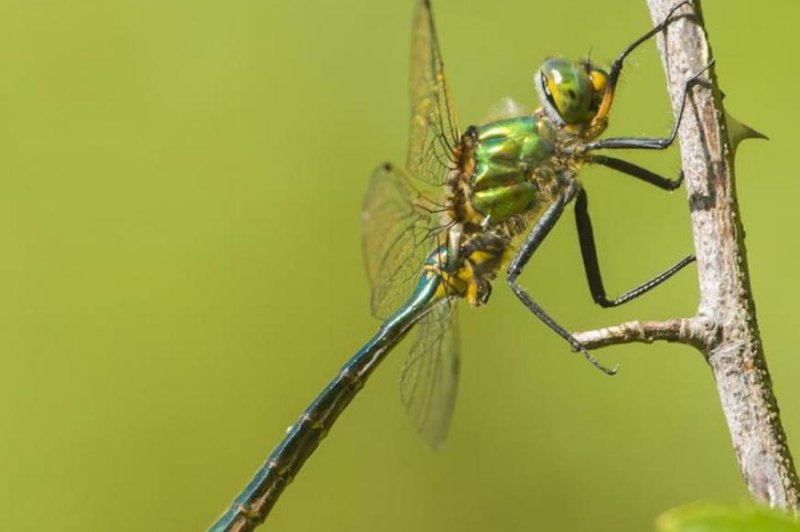The dragonfly and its brain are able to anticipate the path and positioning of prey based on its previous movements. Photo by David O'Carroll/Lund University
July 25 (UPI) -- New analysis of the dragonfly's brain suggests the insect can anticipate the path of its prey. The revelation could help robotics engineers design more efficient and accurate visual prediction systems, researchers say.
"Until now, the international research community has primarily considered the capabilities of mammals, such as humans, for investigating how animals can predict where a moving object will be in the near future," Dr. Steven Wiederman, a neurobiologist at the University of Adelaide, said in a news release.
Mammalian brains can accomplish much more sophisticated tasks than insect brains, but scientists continue to be amazed at the capabilities of the dragonfly's seemingly simple neural network.
"We're finding that dragonflies have keen visual and neural processes that could be ideal for translating into technological advances," Wiederman said.
Scientists were able to observe target-detecting neurons in the dragonfly's brain as the insect tracked simulated prey across a complex background. Their analysis showed the neurons were more active in responding to a visual focus field located just ahead of the moving object. When the moving object disappeared from the dragonfly's field of vision, this focus area moved farther ahead, anticipating where the object would reappear.
The findings -- detailed this week in the journal eLife -- prove the dragonfly's neurons can take in information about an object's trajectory and use that information to predict the object's future positioning.
"The dragonfly does something very similar to what we do when we track a ball in motion," said David O'Carroll, a professor of biology at Lund University in Sweden.
However, it may prove easier to translate the visual prediction system found in the dragonfly brain to technological systems.
"This is an exciting discovery, and it aids our understanding of how single neurons make advanced predictions based on past history," Wiederman said. "Our team is convinced that these results will have practical applications, especially in the development of artificial control and vision systems, such as self-steering vehicles and bionic vision."















